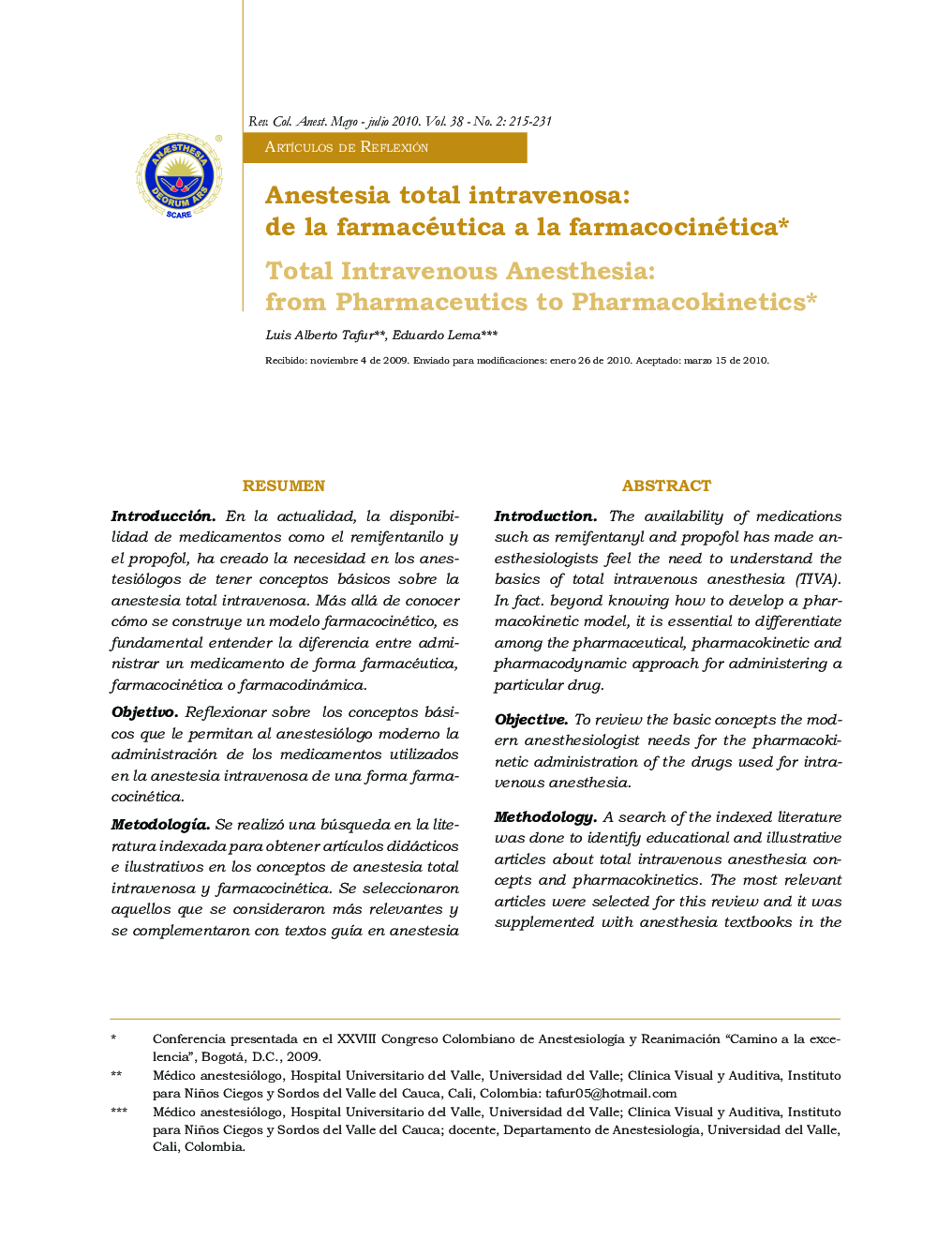| Article ID | Journal | Published Year | Pages | File Type |
|---|---|---|---|---|
| 2767945 | Revista Colombiana de Anestesiología | 2010 | 17 Pages |
RESUMENIntroducciónEn la actualidad, la disponibilidad de medicamentos como el remifentanilo y el propofol, ha creado la necesidad en los anestesiólogos de tener conceptos básicos sobre la anestesia total intravenosa. Más allá de conocer cómo se construye un modelo farmacocinético, es fundamental entender la diferencia entre administrar un medicamento de forma farmacéutica, farmacocinética o farmacodinámica.ObjetivoReflexionar sobre los conceptos básicos que le permitan al anestesiólogo moderno la administración de los medicamentos utilizados en la anestesia intravenosa de una forma farmacocinética.MetodologíaSe realizó una búsqueda en la literatura indexada para obtener artículos didácticos e ilustrativos en los conceptos de anestesia total intravenosa y farmacocinética. Se seleccionaron aquellos que se consideraron más relevantes y se complementaron con textos guía en anestesia en lo concerniente a farmacocinética y anestesia total intravenosa.ResultadosSe obtuvieron 51 artículos y 5 capítulos de texto guía en anestesia. Independientemente de cuál de estos instrumentos utilicemos o qué tan exactos sean, lo realmente importante es saber que contamos con herramientas que nos permiten adecuar, con base en la estimación de los niveles plasmáticos, la anestesia en los diferentes momentos de la cirugía y, en el caso del remifentanilo, a condiciones particulares como la edad.Se trata de la evolución del anestesiólogo a la par con la de los fármacos cada vez más predecibles con los que contamos en la actualidad y de la posibilidad de obtener una anestesia más segura, más predecible, más costo-eficiente y con mayor control por parte del profesional.
ABSTRACTIntroductionThe availability of medications such as remifentanyl and propofol has made anesthesiologists feel the need to understand the basics of total intravenous anesthesia (TIVA). In fact. beyond knowing how to develop a pharmacokinetic model, it is essential to differentiate among the pharmaceutical, pharmacokinetic and pharmacodynamic approach for administering a particular drug.ObjectiveTo review the basic concepts the modern anesthesiologist needs for the pharmacokinetic administration of the drugs used for intravenous anesthesia.MethodologyA search of the indexed literature was done to identify educational and illustrative articles about total intravenous anesthesia concepts and pharmacokinetics. The most relevant articles were selected for this review and it was supplemented with anesthesia textbooks in the area of pharmacokinetics and total intravenous anesthesia.Results51 articles and 5 chapters from textbooks on anesthesia were selected. Regardless of the instruments used or how accurate they may be, what is really important is knowing that we have the tools available and based on the estimated plasma levels, we can adjust the anesthesia to the different stages of the surgical procedure; in the case of remifentanyl, it can be adjusted to the specific conditions such as the age of the patient.The point is that the anesthesiologist has to evolve keeping pace with the increasingly more predictable drugs now available and with the possibility of achieving a safer, more predictable and cost-effective anesthesia with greater control both by the experienced professional and the trainee.
